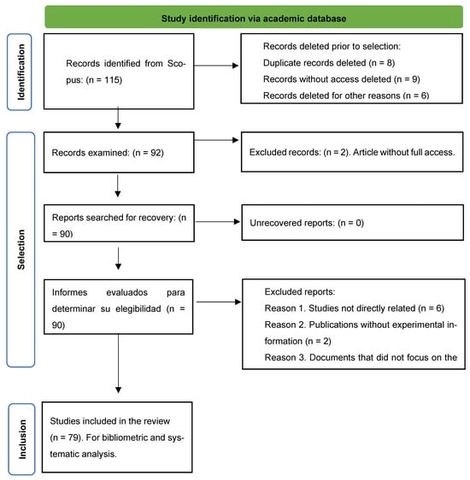- Systematic Review
Artificial Intelligence in Solar-Assisted Greenhouse Systems: A Technical, Systematic and Bibliometric Review of Energy Integration and Efficiency Advances
- Edwin Villagran,
- John Javier Espitia and
- Fabián Andrés Velázquez
- + 3 authors
Protected agriculture increasingly requires solutions that reduce energy consumption and environmental impacts while maintaining stable microclimatic conditions. The integration of Artificial Intelligence (AI), Machine Learning (ML), and Deep Learning (DL) with solar technologies has emerged as a pathway toward autonomous and energy-efficient greenhouses and solar dryers. This study analyzes the scientific and technological evolution of this convergence using a mixed review approach bibliometric and systematic, following PRISMA 2020 guidelines. From Scopus records (2012–2025), 115 documents were screened and 79 met the inclusion criteria. Bibliometric results reveal accelerated growth since 2019, led by Engineering, Computer Science, and Energy, with China, India, Saudi Arabia, and the United Kingdom as dominant contributors. Thematic analysis identifies four major research fronts: (i) thermal modeling and energy efficiency, (ii) predictive control and microclimate automation, (iii) integration of photovoltaic–thermal (PV/T) systems and phase change materials (PCMs), and (iv) sustainability and agrivoltaics. Systematic evidence shows that AI, ML, and DL based models improve solar forecasting, microclimate regulation, and energy optimization; model predictive control (MPC), deep reinforcement learning (DRL), and energy management systems (EMS) enhance operational efficiency; and PV/T–PCM hybrids strengthen heat recovery and storage. Remaining gaps include long-term validation, metric standardization, and cross-context comparability. Overall, the field is advancing toward near-zero-energy greenhouses powered by Internet of Things (IoT), AI, and solar energy, enabling resilient, efficient, and decarbonized agro-energy systems.
6 December 2025





